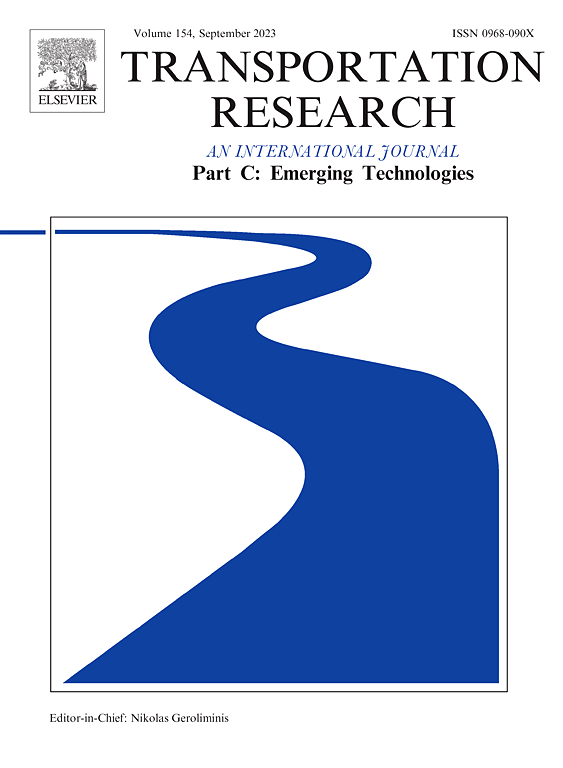Optimal scheduling of ships in inland waterway with serial locks
IF 7.6
1区 工程技术
Q1 TRANSPORTATION SCIENCE & TECHNOLOGY
Transportation Research Part C-Emerging Technologies
Pub Date : 2025-06-30
DOI:10.1016/j.trc.2025.105241
引用次数: 0
Abstract
Locks built on inland waterways enable ships to overcome water level differences. However, potential congestion at locks poses challenges in scheduling problems for inland shipping. This study designs an optimal plan for multiple ships passing through serial locks on both the main channel and tributaries of an inland waterway. Two novel mixed-integer linear programming (MILP) methods, one based on constraint analysis and one on bisection search, are proposed to solve the problem. Moreover, a dynamic linearization method is developed, which strategically simplifies the scheduling problem in its early stages to reduce solution times. Computational experiments based on a realistic case in China are conducted. The results show that the constraint analysis-based MILP method outperforms the bisection search-based MILP method for small- and medium-scale instances, while the bisection search-based MILP method is more effective for large-scale instances. Additionally, a dynamic linearization method improves computational efficiency while ensuring high solution quality. For 40-ship instances, the dynamic linearization method finds 67% more optimal solutions than the constraint analysis-based MILP method while requiring only 40% of the time. Subsequently, we compare optimal ship speed between scenarios considering and disregarding potential congestion at locks and find that shorter legs support a larger range of speed adjustment, and that integrated optimization tends to adjust ship speed during shorter legs. Furthermore, sensitivity analyses are conducted to gain managerial insights.
内河串联船闸船舶最优调度
建在内河水道上的水闸使船只能够克服水位差。然而,船闸的潜在拥堵给内河航运的调度问题带来了挑战。本文设计了一种内河主航道和支流上多船通过串联船闸的最优方案。提出了两种新的混合整数线性规划(MILP)方法,一种是基于约束分析的方法,另一种是基于平分搜索的方法。此外,提出了一种动态线性化方法,在调度问题的早期有策略地简化了调度问题,减少了求解时间。基于中国的一个实际案例进行了计算实验。结果表明,基于约束分析的MILP方法在中小型实例中优于基于对分搜索的MILP方法,而基于对分搜索的MILP方法在大规模实例中更有效。此外,动态线性化方法在保证高解质量的同时提高了计算效率。对于40艘船的实例,动态线性化方法比基于约束分析的MILP方法多找到67%的最优解,而只需要40%的时间。随后,我们比较了考虑和不考虑船闸潜在拥塞情况下的最优航速,发现较短航程支持更大范围的航速调整,并且综合优化倾向于在较短航程时调整航速。此外,进行敏感性分析以获得管理见解。
本文章由计算机程序翻译,如有差异,请以英文原文为准。
求助全文
约1分钟内获得全文
求助全文
来源期刊
CiteScore
15.80
自引率
12.00%
发文量
332
审稿时长
64 days
期刊介绍:
Transportation Research: Part C (TR_C) is dedicated to showcasing high-quality, scholarly research that delves into the development, applications, and implications of transportation systems and emerging technologies. Our focus lies not solely on individual technologies, but rather on their broader implications for the planning, design, operation, control, maintenance, and rehabilitation of transportation systems, services, and components. In essence, the intellectual core of the journal revolves around the transportation aspect rather than the technology itself. We actively encourage the integration of quantitative methods from diverse fields such as operations research, control systems, complex networks, computer science, and artificial intelligence. Join us in exploring the intersection of transportation systems and emerging technologies to drive innovation and progress in the field.

 求助内容:
求助内容: 应助结果提醒方式:
应助结果提醒方式:


